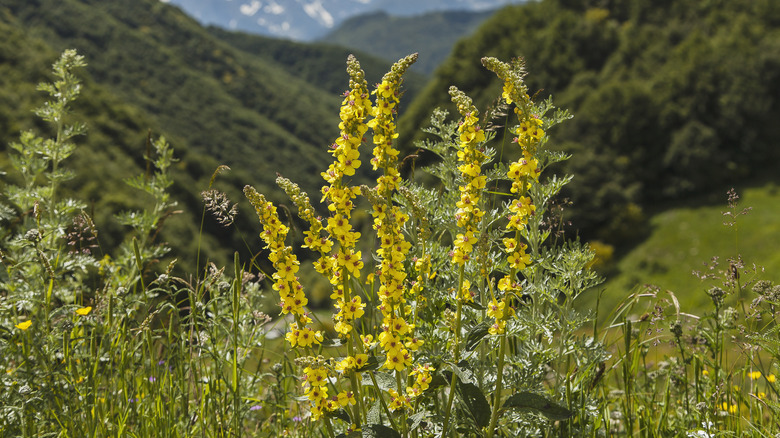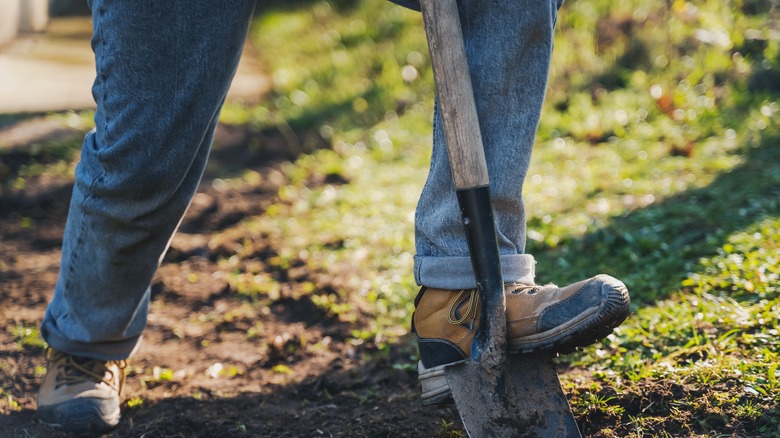Here's Where You Might Have To Deal With The Invasive Mullein Plant
While mullein (Verbascum spp.) is a genus full of beautiful flowers, many of them are invasive in parts of North America. Common mullein (Verbascum thapsus L.), which is native to Europe, is a particular issue as it is found in all parts of the United States and is considered a noxious weed in many states including Colorado and Hawaii. Even in areas where it is not officially listed as a noxious weed on a state level, such as in Montana, it is still considered a noxious weed in many counties. It is also a problem in Eastern states including North Carolina.
Despite common mullein's reputation as an all natural toilet paper solution, its aggressiveness is such that even in states where it is not officially considered an invasive species, it is not generally advised to let mullein grow in your yard. In addition to its invasiveness, it is also notorious for attracting wasps to your yard and garden. Luckily, common mullein is easy to identify thanks to its distinctive leaves and tall yellow flower spike. It can also be removed fairly easily if you are only dealing with a few plants, and while large patches are more challenging to deal with, using a hoe or shovel to remove plants, possibly in combination with careful herbicide usage, should allow you to control or eliminate mullein.
Dealing with aggressive or invasive mullein
Common mullein is hardy in zones 3 through 9 and is commonly found in areas with poor or rocky soil. Because mullein is a stealthy biennial weed, it doesn't flower until its second year and the first year of growth it is simply a rosette of fuzzy leaves. Stay on top of identifying and removing mullein early before it has the opportunity to go to seed. The best way to handle unwanted mullein plants is to simply pull or remove them, either by hand or with a hoe or shovel.
In some cases an herbicide can be beneficial for dealing with large numbers of mullein plants, though many herbicides do not work terribly well against it, due to mullein's fuzzy leaves. Both Glyphosate and 2,4-D, among other herbicides, can be used against mullein, but be sure to carefully read and follow all instructions when using them. Mullein seeds have a long life, so you may need to continue watching for new mullein seedlings for quite some time, even after you've eliminated most plants.

